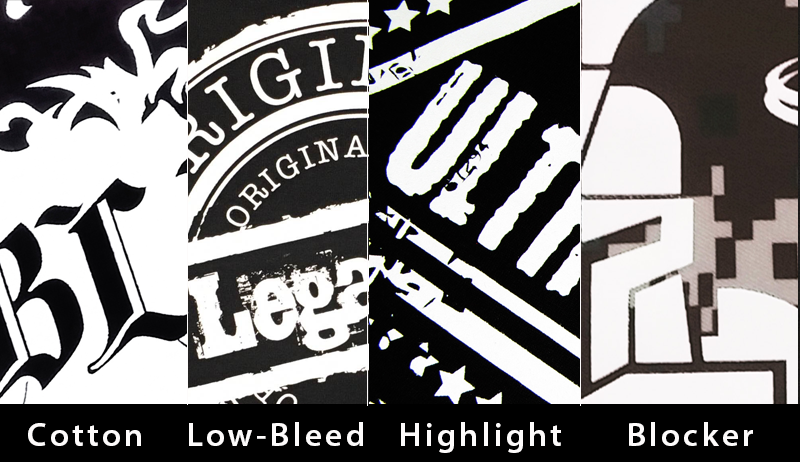White Inks - Which To Use For What?
August 15, 2018
 In a recent article published by Impressions Magazine, Mark Brouillard helps us distinguish between a variety of different white inks.
Confused about the different white inks on the market? Most printers understand the difference between a cotton white and a low-bleed white, but what about a mixing white vs. a highlight white?
Here’s a brief breakdown on which white to use for what:
In a recent article published by Impressions Magazine, Mark Brouillard helps us distinguish between a variety of different white inks.
Confused about the different white inks on the market? Most printers understand the difference between a cotton white and a low-bleed white, but what about a mixing white vs. a highlight white?
Here’s a brief breakdown on which white to use for what:
- A Mixing White is going to be somewhat less opaque due to the fact that it is a mixing white and it is meant to be used in conjunction with other primary colors to make a Pantone formulation. It can be used by itself but will have limited opacity.
- A Cotton White is mainly used as a white underlay for dark garments, specifically cotton garments. It’s important to mention that cotton should be printed with a non-ghosting ink, which most inks meant for cotton are, because the fabric is prone to “ghosting” or bleaching when printed using some low-bleed inks or other inks that have bleaching properties.
- A Highlight White is generally printed on top of other white ink to give the white print a brighter, highlighted white. The ink may contain optical brighteners to make the white color pop.
- A Low-Bleed White is mainly used as a white underlay for dark 50/50 type garments. This type of ink has some dye bleed blocking properties, depending on the substrate.
- A Poly White is formulated for printing on 100% polyester garments and has a stronger dye bleed blocking property. Most poly whites also have additional elongation or stretch properties, so they can be used for printing on performance or athletic fabrics, including mesh shirts and bathing suits. Many poly inks now also cure at lower temperatures to help maximize its bleed blocking capabilities.
- Bleed Blocker Gray or Black are special inks (not regular gray or black inks) specifically formulated to block notoriously bleeding fabrics such as camouflage and popular wicking or performance fabrics. These inks typically contain a carbon compound that absorbs the dye and stops it from leaching into the white overprint.




